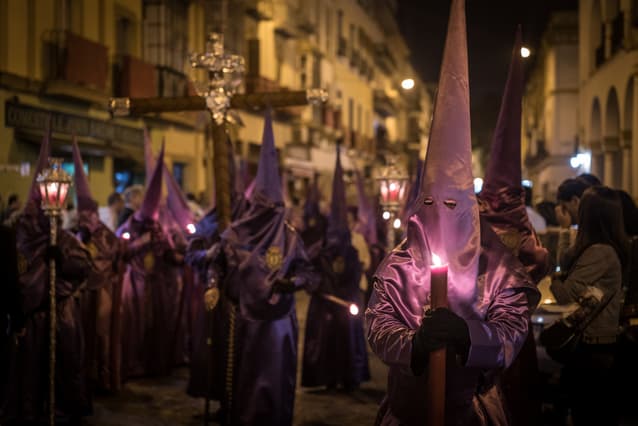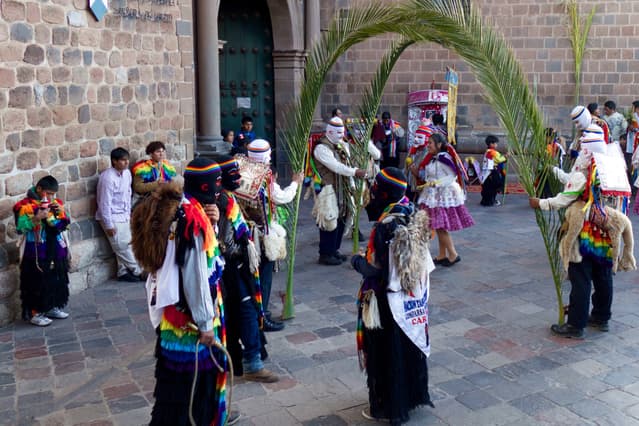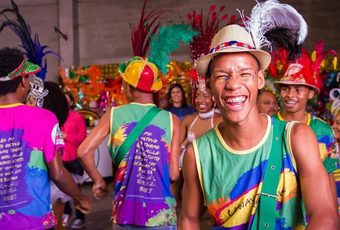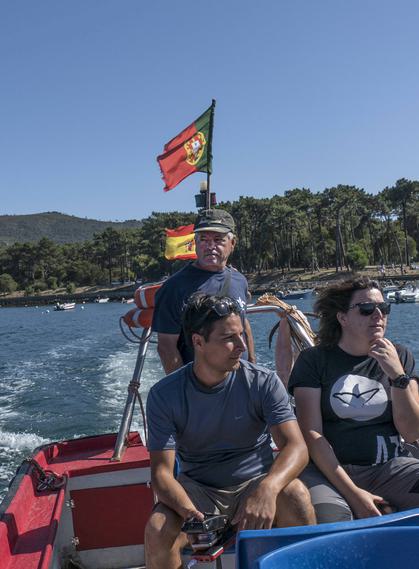Blog
18 facts about Semana Santa to help you plan your visit
Semana Santa, which means Holy Week in Spanish (although the literal translation is "Saints Week"), is the celebration of Easter that takes place in Spain, Portugal and Latin America for - you guessed it - an entire week.
These festivities are some of the most vibrant and widely observed celebrations of the year. Depending on where you decide to visit, they also offer some of the most idiosyncratic and unique events in the world. If you want to experience the Semana Santa celebrations first-hand, then we have a number of trips which we can time to coincide with the processions.

Here are 18 facts to help you decide where to spend your perfect Semana Santa.
Semana Santa around the world
1 - Semana Santa commemorates the Passion of Christ in the Catholic tradition, and takes place the week directly before Easter.
2 - It is considered the major annual celebration in Spain, Portugal and most Latin American countries. You can attend the festival in most major cities.
3 - In Spain, the biggest celebrations occur in Andalucía, across the south. Seville, Málaga, Córdoba and Granada are some of the most famous cities for their processions. You can visit any of these on our Andalucía self-drive trip, timed to coincide with the festivities. In the north, León, Valladolid and Santiago de Compostela are among the well-known.
4 - Zamora, near Valladolid, is home to one of the oldest traditions, dating back to the 13th century. Nocturnal processions are marked with silence and meditation.

How is Semana Santa celebrated?
5 - In southern Spain, participants sing flamenco-origin 'saeta' (literally arrow to the heart) during the processions. Despite increased visitor numbers coming to watch the celebrations, the week retains a deeply significant meaning for Andalucíans. Little has changed or been adapted for the benefit of tourists over time.
6 - In Portugal, the biggest celebrations take place in the northern city of Braga. There are other interesting traditions and spectacles in the small Alentejo town of Castile da Vide and the historic northern city of Guimarães, considered the birthplace of Portugal. You can attend Semana Santa in any of these places on our Portugal self-drive itinerary.
7 - In Latin America, many celebrate Easter with a mix of indigenous and European Catholic tradition. For example, in Peru's Ayacucho, locals chant in the Quechua language.

8 - Quito in Ecuador is famed for its unique Arrastre de Caudas - the dragging of the cape. Rooted in Roman funery rituals, the 16th century tradition is thought to renew the faith. The archbishop waves a large flag over the prostrate bodies of priests in Quito's cathedral.
9 - Brazil is the country in the region with the most Catholics. The processions during Semana Santa (or Semana da Páscoa in Portuguese) can reach tens of thousands of participants. In the state of Pernambuco they set up the largest open air theatre in the world - 61 square kilometers! Hundreds of actors re-enact The Passion of Christ.
Semana Santa processions, pilgrimages and floats
10 - Each 'paso' - the famous religious floats carried on the shoulders of participants - can weigh over 1,000 kilograms.
11 - It takes about 40-50 men, called Nazarenos and organized in 'cofradias' (brotherhoods) to carry one paso.
12 - Some Nazarenes walk barefoot with shackles and chains for up to 14 hours. Many a tourist from the US has been shocked by the appearance of Nazarenes due to their similarities to the infamous Klu Klux Klan, but in fact the KKK modelled their look on these Catholic traditions.
13 - Mexico city's Iztapalapa organises one of the largest processions in the world, where up to 3 million people take part in the Passion plays.
14 - In Bolivia, thousands make a 150 km pilgrimage over just two days from La Paz to the Copacabana Sanctuary on the shores of Lake Titicaca.

The sights and smells of Semana Santa
15 - In Latin America 'alfombras de aserrín' (rugs traditionally made of colored sand, flowers, and fruits) usually cover the streets where processions pass.
16 - In Spain, 'torrija' is traditionally enjoyed during Semana Santa. This is a Spanish take on French bread, somewhat akin to bread and butter pudding. It is made with old bread, dipped in milk, sugar and eggs and often fried in olive oil.
17 - Ecuadorians eat 'fanesca', a bean and grain soup with a fish base, only during Semana Santa.
18 - The color purple plays a significant role in the Christian religion during Semana Santa, it is related to suffering.


Andalucía Signature Drive
-
$4,060 pp
- 14 days

Inca Heartland: Machu Picchu & Sacred Valley
-
$3,800 pp
- 7 days

Portugal Signature Drive
-
$4,830 pp
- 14 days

Seville to Aracena Hills Signature Drive
-
$1,890 pp
- 7 days

Walks, Villages & Flavors of the Aracena Hills
-
$1,950 pp
- 8 days

Córdoba to Granada: Andalucían Tales & Trails
-
$3,000 pp
- 10 days








 By
By